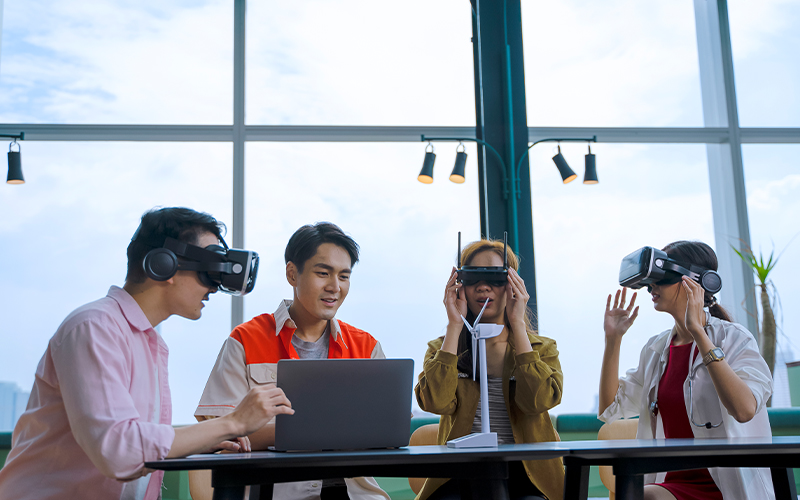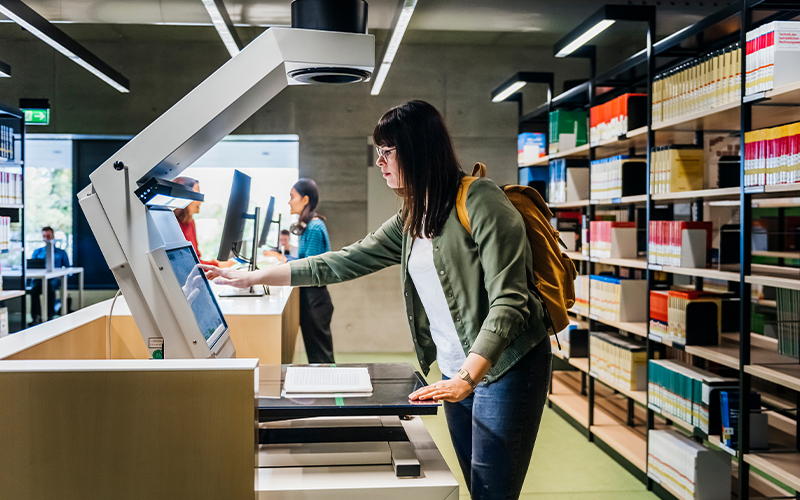Traditional classroom learning evokes mental images of teachers, chalkboards, and lectures. This school (and college) format usually carries over into our working years vis-a-vis employee training and development programmes. During the pandemic these long-standing conventions were perforce disrupted. Learning went remote but the format for imparting and imbibing knowledge remained much the same. Now, a bigger disruption has arrived, and it’s called Immersive Learning, a training methodology that is based on cognitive and behavioural science. Immersive Learning promises to fundamentally change the way people understand their world, learn skills, and engage with work.
Individuals vary in how they process, retain, and use knowledge. Conventional teaching methods, whether in formal education or work-related training, are known to have limitations in addressing these differences. Immersive learning, by leveraging the power of technology, holds out the promise of leapfrogging such deficiencies and dramatically improving learning outcomes for more people than ever.
How immersive learning works
No lectures and no notes! In this radically different study environment, learners develop and enhance skills by immersing themselves in a virtual environment using content that accurately mirrors real-world settings. The passivity that characterises conventional learning is replaced by active participation, thus improving effectiveness and engagement. Another benefit — immersive learning provides a safe and risk-free environment for participants to experiment, practice and hone their skills, avoiding the costs or restrictions of creating simulated environments in the physical world.
There are several other advantages immersive learning offers that have popularised it in the business world:
- The process, based on sensory learning is more natural as it enables students to connect at an organic level with their subject of study.
- Immersive learning hones a learner’s problem-solving and critical thinking abilities. In a given context, learners must figure out on their own how to resolve a problem, rather than accepting ready-made solutions.
- Research shows that immersive learning helps students in retaining information better than conventional, book-based learning. This is due to the high level of realism offered by the virtual environment where learners can, for example, have conversations with a simulated character or assemble parts of a virtual machine.
- Immersive learning is more personalised; users learn at their own pace and receive immediate feedback from instructors. This enables a complete understanding of every learning component.
- Employees trained with immersive techniques learn and complete their training much faster than e-learners; also, they exhibit a vastly higher level of confidence in their abilities, according to one study.
This methodology is based on extensive research which indicates that the human brain perceives virtual reality in the same way that it makes sense of the physical world. Ergo, how you perform tasks in a virtual environment is a pretty accurate indicator of what you would accomplish in a real-life work setting.
Let us take a look at some immersive learning tools:
Virtual Reality (VR)
The name says it all. VR consists of a digitally created environment that mimics the real world in detail. Immersed in it, the user can perform various tasks such as moving around a room, touching and shifting objects, dismantling them and even interacting with virtual people.
Augmented Reality (AR)
You may have encountered AR already on shopping websites where a virtual product on your mobile phone can be “placed” in a real-world space to better visualise it. In an educational context, learners typically use headsets or AR-enabled mobile phones or desktop devices to explore objects inside out and learn how equipment can be used.
Video-based Learning (VL)
Video learning enables users to acquire skills and knowledge in a virtual environment using 360-degree video. It is a particularly useful substitute for real-world processes or environments that pose risks to human safety, lack accessibility or are too expensive. Learners view 360-degree videos using a VR headset or a mouse/touchpad on computers or mobile devices.
How to use immersive learning
Immersive learning tools represent a huge advancement in training and skill development. That does not mean older training methods are defunct or can be entirely replaced by immersive learning. For one, using these tech tools demands considerable planning and implementation in advance. Training managers should develop strategies to integrate these new learning tools into their training and skilling programmes, with a clear idea of the expected outcomes. Depending on the type of company you manage and your project training requirements, opt for a best-of-both-worlds approach, complementing tech tools like VR, AR and 360-degree video with regular instructor-based sessions and e-learning. For example, a company could develop an AR-based app that supplements a manual with extra information and interactive experiences.
For organizations on the digital transformation journey, agility is key in responding to a rapidly changing technology and business landscape. Now more than ever, it is crucial to deliver and exceed on organizational expectations with a robust digital mindset backed by innovation. Enabling businesses to sense, learn, respond, and evolve like a living organism, will be imperative for business excellence going forward. A comprehensive, yet modular suite of services is doing exactly that. Equipping organizations with intuitive decision-making automatically at scale, actionable insights based on real-time solutions, anytime/anywhere experience, and in-depth data visibility across functions leading to hyper-productivity, Live Enterprise is building connected organizations that are innovating collaboratively for the future.








